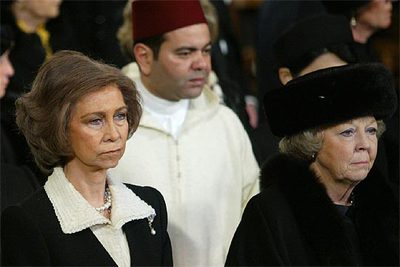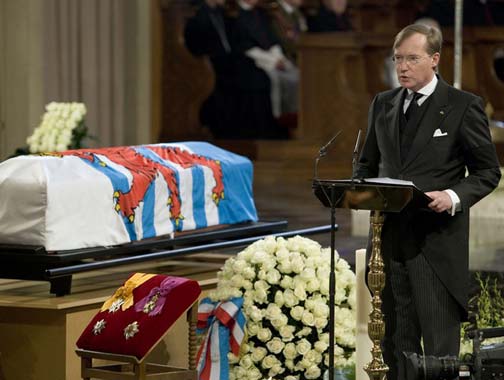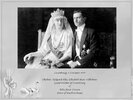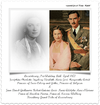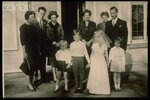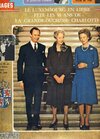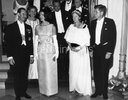Navigation
Instalar el app
How to install the app on iOS
Follow along with the video below to see how to install our site as a web app on your home screen.
Se debe tener en cuenta: This feature may not be available in some browsers.
Más Opciones
Estás usando un navegador obsoleto. No se pueden mostrar estos u otros sitios web correctamente.
Se debe actualizar o usar un navegador alternativo.
Se debe actualizar o usar un navegador alternativo.
La realeza en los Funerales del Gran Duque Jean de Luxemburgo.
- AutorLaLaGirl
- Fecha de inicio
Realmente... ¿Tú crees que Mª Teresa es mejor?. ¿No crees que se lleva mal con demasiada gente?
MariTere es media bruja! Dijo lo que dijo a los periodistas de la pobre Josephine Charlotte cuando ésta estaba ya enferma, porque no tenía los... Para decirle lo que le resentía en la cara. Los rumores dicen que tampoco le ha hecho la vida fácil a Stephanie y además ha tenido encontronazos con el Primer Ministro, cosa que todos en Luxemburgo saben.
S
SusanneRW
Guest
Aquí hay muchos videos sober la vida del Gran Duque Jean: https://www.rtl.lu/news/national/a/1280479.html
Era igualmente descendiente directo de los reyes de Portugal.Con la muerte del Gran-Duque Jean perdemos otro de los puntales de la "vieja guardia" de las Monarquías de Europa. Además de un gran soberano reinante en el Gran Ducado era considerado un "Héroe de guerra".
Tenía un "pedigrí" impecable pues su padre, el Príncipe Félix de Luxemburgo, era un Borbón-Parma, lo que convertía a Jean en primo hermano del Archiduque Otto de Austria; de Carlos Hugo, Duque de Parma y de la Reina Anna de Rumanía, entre muchos otros príncipes europeos. Por vía materna era un Nassau, lo cual le emparentaba con la Casa Real de los Países Bajos y con otras Casas Reales europeas, y a través de su matrimonio con la Princesa Josephine-Charlotte de Bélgica emparentó con los Reyes de los Belgas y con la familia de Saboya.
Sin duda alguna su Funeral de Estado, al igual que ocurrió en 2005 con el de su esposa, reunirá en la capital del Gran Ducado a muchos Reyes y Príncipes reinantes, Príncipes herederos y miembros de Familias Reales.
La Familia Real inglesa mantenía estrechos lazos de amistad con el Gran Duque Jean y aunque la Reina Elizabeth II ya no se desplaza al extranjero por motivos de edad, estará representada ciertamente por el Príncipe de Gales y la Duquesa de Cornuailles.
Respecto a España, dado que fueron los Reyes Don Juan Carlos y Doña Sofía los que mantuvieron más relación con el Gran Duque Jean, ciertamente Felipe VI delegará en ellos la representación de nuestro país.
En los próximos días las Casas Reales a través de sus webs oficiales empezarán a confirmar qué miembros de cada Familia Real estarán presentes en el Funeral de Estado.
Dejo unas fotografías del Funeral de Estado de la Gran Duquesa Josephine-Charlotte en 2005:
Sera enterrado en la catedral Notre Dame de Luxemburgo donde están enterrados Josephine Charlotte, Charlotte Y Felix , sus padres, la Gran duquesa Marie Adelaide su tia, y su abuela Maria anna , La consorte de Guillaume IV.
Adolfo y Guillaume IV y Adelaida mujer de Adolfo, primer gran duque de Luxemburgo independiente, al nos eran católicos no estan enterrados allí.
Adolfo y Guillaume IV y Adelaida mujer de Adolfo, primer gran duque de Luxemburgo independiente, al nos eran católicos no estan enterrados allí.
https://en.wikipedia.org/wiki/Notre-Dame_Cathedral,_Luxembourg
Notre-Dame Cathedral (Luxembourgish: Kathedral Notre-Dame, French: Cathédrale Notre-Dame, German: Kathedrale unserer lieben Frau) is the Roman Catholic Cathedral of Luxembourg City, in southern Luxembourg. It was originally a Jesuit church, and its cornerstone was laid in 1613. It is the only cathedral in Luxembourg.
The church is a noteworthy example of late gothic architecture; however, it also has many Renaissance elements and adornments. At the end of the 18th century, the church received the miraculous image of the Maria Consolatrix Afflictorum, the patron saint of both the city and the nation.
Around 50 years later, the church was consecrated as the Church of Our Lady and in 1870, it was elevated by Pope Pius IX to the Cathedral of Notre-Dame.
At the cemetery of the cathedral is the National Monument to the Resistance and to the Deportation. The centerpiece of the monument is the famous bronze monument by the 20th century Luxembourgish sculptor Lucien Wercollier called The Political Prisoner.
The cathedral was expanded and enlarged from 1935 to 1938.
Contents
History[edit]
Jesuits from Belgium, which like Luxembourg belonged to the Spanish Netherlands at the time, opened a college in Luxembourg city in 1603, where the majority of young Luxembourgers were taught until 1773. The first stone of the church was laid on 7 May 1613, under Father François Aldenard. The constructor of the building was Ulrich Job, from Lucerne. Under him, the decoration of the columns also took place. The Jesuit church was consecrated and dedicated to the Immaculate Conception on 17 October 1621 by auxiliary bishop Georg von Helfenstein.
Artistically, it was above all the German sculptor Daniel Muller (d. 1623) from Freiberg (Saxony) who contributed to the appearance of the church, his work including the organ tribune. The decorations in alabaster, a favourite material of Dutch Renaissance sculptors, represent early Baroque angels, who play music between leaves and floral decorations.
After the Jesuits had left the city in 1773, Empress Maria Theresa of Austria gifted the church to the City of Luxembourg in 1778, and it became the new parish church under the name "Saint Nicolas et Sainte Thérèse". This was convenient, as at the time the old parish church, the church of St. Nicholas on the Krautmaart was small and decrepit, and was demolished in 1779. For this reason, a statue of St. Nicholas stands over the Cathedral entrance in Rue Notre-Dame.
It received the name "Notre-Dame" on 31 March 1848 under the apostolic vicar Jean-Théodore Laurent. His successor, Nicolas Adames, had the Baroque interior refurbished from 1854 in a neo-Gothic style. When Luxembourg was elevated to a bishopric by Pope Pius IX on 27 June 1870, the Notre-Dame Church became Notre-Dame Cathedral.
Architecture[edit]
Though a noteworthy example of late gothic architecture, the Cathedral has many Renaissance elements and adornments.
20th century enlargement[edit]
From 1935 to 1938 the Cathedral was enlarged and expanded. This enlargement, which influence the silhouette of the fortress city of Luxembourg, went ahead according to plans by and under the supervision of the Luxembourgish architect Hubert Schumacher. The expanded area, which connects to the two choir bays of 1613-1621, characterises the image of the former Jesuit church both due to its spaceousness and through the architectural unity. The rebuilding of the exterior architecture on the Gothic-style cathedral presented a challenge, since the goal was to harmoniously integrate the church with the surrounding buildings, such as the former Athénée building from the 17th century, the national library, the old church of St. Maximin (1751) (now the Foreign Ministry), as well as the old residential houses.
Towers[edit]
The Cathedral has three towers, the west tower, which was the tower of the Jesuit church and which contains the bells, the east tower, and the central tower, which stands over the transept.
When the Cathedral was enlarged in 1935-1938, the east and central towers were added. The central tower, which is only a third of the height of the other towers, consists of a wide, pyramid-shaped base and a narrow peak covered with copper. The roof itself is carried by a steel frame, consisting of two PN20 beams from ARBED-Belval.
On Good Friday, 5 April 1985, around mid-day, work on the roof caused the west tower to catch fire. The church bells, i.e. the Virgin Mary bell, the Willibrord bell, the Peter bell, and the Cunigunde bell were destroyed in the fire. When the tower collapsed, the roof of the central aisle was also partly damaged. It took until 17 October 1985 for the tower to be repaired.
Burials in the crypt[edit]
The crypt of the Cathedral contains the remains of members of the Grand-Ducal family. The following persons are interred here:
Notre-Dame Cathedral (Luxembourgish: Kathedral Notre-Dame, French: Cathédrale Notre-Dame, German: Kathedrale unserer lieben Frau) is the Roman Catholic Cathedral of Luxembourg City, in southern Luxembourg. It was originally a Jesuit church, and its cornerstone was laid in 1613. It is the only cathedral in Luxembourg.
The church is a noteworthy example of late gothic architecture; however, it also has many Renaissance elements and adornments. At the end of the 18th century, the church received the miraculous image of the Maria Consolatrix Afflictorum, the patron saint of both the city and the nation.
Around 50 years later, the church was consecrated as the Church of Our Lady and in 1870, it was elevated by Pope Pius IX to the Cathedral of Notre-Dame.
At the cemetery of the cathedral is the National Monument to the Resistance and to the Deportation. The centerpiece of the monument is the famous bronze monument by the 20th century Luxembourgish sculptor Lucien Wercollier called The Political Prisoner.
The cathedral was expanded and enlarged from 1935 to 1938.
Contents
History[edit]
Jesuits from Belgium, which like Luxembourg belonged to the Spanish Netherlands at the time, opened a college in Luxembourg city in 1603, where the majority of young Luxembourgers were taught until 1773. The first stone of the church was laid on 7 May 1613, under Father François Aldenard. The constructor of the building was Ulrich Job, from Lucerne. Under him, the decoration of the columns also took place. The Jesuit church was consecrated and dedicated to the Immaculate Conception on 17 October 1621 by auxiliary bishop Georg von Helfenstein.
Artistically, it was above all the German sculptor Daniel Muller (d. 1623) from Freiberg (Saxony) who contributed to the appearance of the church, his work including the organ tribune. The decorations in alabaster, a favourite material of Dutch Renaissance sculptors, represent early Baroque angels, who play music between leaves and floral decorations.
After the Jesuits had left the city in 1773, Empress Maria Theresa of Austria gifted the church to the City of Luxembourg in 1778, and it became the new parish church under the name "Saint Nicolas et Sainte Thérèse". This was convenient, as at the time the old parish church, the church of St. Nicholas on the Krautmaart was small and decrepit, and was demolished in 1779. For this reason, a statue of St. Nicholas stands over the Cathedral entrance in Rue Notre-Dame.
It received the name "Notre-Dame" on 31 March 1848 under the apostolic vicar Jean-Théodore Laurent. His successor, Nicolas Adames, had the Baroque interior refurbished from 1854 in a neo-Gothic style. When Luxembourg was elevated to a bishopric by Pope Pius IX on 27 June 1870, the Notre-Dame Church became Notre-Dame Cathedral.
Architecture[edit]
Though a noteworthy example of late gothic architecture, the Cathedral has many Renaissance elements and adornments.
20th century enlargement[edit]
From 1935 to 1938 the Cathedral was enlarged and expanded. This enlargement, which influence the silhouette of the fortress city of Luxembourg, went ahead according to plans by and under the supervision of the Luxembourgish architect Hubert Schumacher. The expanded area, which connects to the two choir bays of 1613-1621, characterises the image of the former Jesuit church both due to its spaceousness and through the architectural unity. The rebuilding of the exterior architecture on the Gothic-style cathedral presented a challenge, since the goal was to harmoniously integrate the church with the surrounding buildings, such as the former Athénée building from the 17th century, the national library, the old church of St. Maximin (1751) (now the Foreign Ministry), as well as the old residential houses.
Towers[edit]
The Cathedral has three towers, the west tower, which was the tower of the Jesuit church and which contains the bells, the east tower, and the central tower, which stands over the transept.
When the Cathedral was enlarged in 1935-1938, the east and central towers were added. The central tower, which is only a third of the height of the other towers, consists of a wide, pyramid-shaped base and a narrow peak covered with copper. The roof itself is carried by a steel frame, consisting of two PN20 beams from ARBED-Belval.
On Good Friday, 5 April 1985, around mid-day, work on the roof caused the west tower to catch fire. The church bells, i.e. the Virgin Mary bell, the Willibrord bell, the Peter bell, and the Cunigunde bell were destroyed in the fire. When the tower collapsed, the roof of the central aisle was also partly damaged. It took until 17 October 1985 for the tower to be repaired.
Burials in the crypt[edit]
The crypt of the Cathedral contains the remains of members of the Grand-Ducal family. The following persons are interred here:
- John of Bohemia (1296–1346)
- Marie-Adélaïde, Grand Duchess of Luxembourg (1894–1924)
- Marie Anne of Portugal, Grand Duchess of Luxembourg (1861–1942) – (Consort of Grand Duke William IV)
- Felix of Bourbon-Parma (1893–1970) – (Consort of Grand Duchess Charlotte)
- Charlotte, Grand Duchess of Luxembourg (1896–1985)
- Joséphine Charlotte of Belgium, Grand Duchess of Luxembourg (1927–2005) – (Consort of Grand Duke Jean)
- Jean, Grand Duke of Luxembourg (1921-2019; is going to be buried on 4 May 2019)
Última edición por un moderador:
Vaya sorpresa! Con esa cara tan dulce!! Y porque será tanta amargura? La vida fue generosa con ella!MariTere es media bruja! Dijo lo que dijo a los periodistas de la pobre Josephine Charlotte cuando ésta estaba ya enferma, porque no tenía los... Para decirle lo que le resentía en la cara. Los rumores dicen que tampoco le ha hecho la vida fácil a Stephanie y además ha tenido encontronazos con el Primer Ministro, cosa que todos en Luxemburgo saben.
- Registrado
- 29 Mar 2018
- Mensajes
- 30.201
- Calificaciones
- 69.946
MariTere es media bruja! Dijo lo que dijo a los periodistas de la pobre Josephine Charlotte cuando ésta estaba ya enferma, porque no tenía los... Para decirle lo que le resentía en la cara. Los rumores dicen que tampoco le ha hecho la vida fácil a Stephanie y además ha tenido encontronazos con el Primer Ministro, cosa que todos en Luxemburgo saben.
Justamente por eso te puse ese comentario.
Vaya sorpresa! Con esa cara tan dulce!! Y porque será tanta amargura? La vida fue generosa con ella!
Exacto, fue una niña que lo tuvo todo desde que nació y cuando su familia debió salir de Cuba parece que su exilio también fue bastante cómodo. De los Estados Unidos a Europa y en una buena universidad fue donde conoció a su futuro marido. Marido millonario y además príncipe, familia, posición... Debe ser una mujer muy caprichosa y quiere que las cosas sean como ella lo desee!
Temas Similares
- Respuestas
- 3
- Visitas
- 206
- Respuestas
- 0
- Visitas
- 266
- Respuestas
- 18
- Visitas
- 1K
- Respuestas
- 2
- Visitas
- 184





